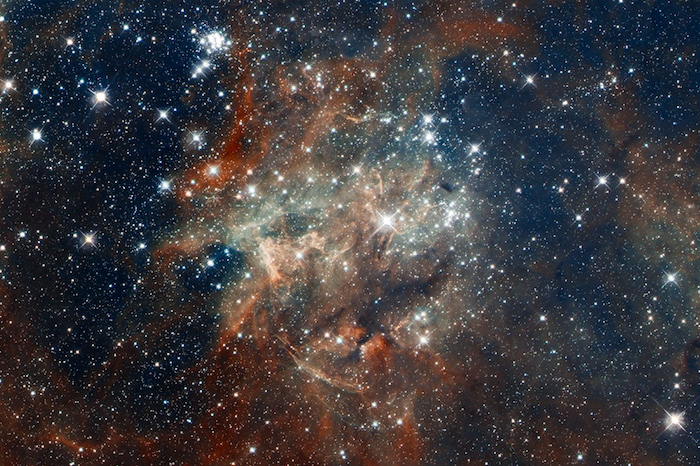Daydreams and utopian desire. Intertextual echoes between Ian McEwan’s The Child in Time and Saturday
Abstract
Readers of both The Child in Time (1987) and Saturday (2005) by Ian McEwan may notice the presence in the latter novel of some allusions to the former. Starting from these intertextual references, this essay proposes the pivotal role of the motif of utopia for the comprehension of both the relationship between the two novels and that between literature and science in the background of each. Utopia is evoked on the allegorical and figurative levels in the first work, while in the second it is only mentioned in order to be denied. Both novels begin with positions of rejection of the traditional conception of utopia, but then go on to illustrate the gradual emergence in the protagonists’ thought of a desire for a better life, for social change in which themselves, with their choices and their families, become models for collective action. Indeed, utopian desire is the driving force behind the plot of both novels, through daydreams which have a dual function: a regressive one which tracks back to a lost golden age and, following Bloch’s thought, an anticipating function, through the “encounter with themselves” for the protagonists and through their recognition and affirmation of the utopian desire.
Downloads
References
Aristotle, The Metaphysics, Eng. trans. by John H. McMahon, New York, Dover Publications, 2013: 126-134.
Baccolini, Raffaella – Moylan, Thomas, “Un dialogo sulla distopia (e) l’antiutopia: una riflessione sulla persistenza dell’utopia”, Nuovissime mappe dell'inferno: Distopia oggi, Eds. Giovanni Maniscalco Basile – Darko Suvin, Roma: Monolite Edizioni, 2004: 35-51.
Bastos da Silva, Jorge (ed.), The Epistemology of Utopia: Rhetoric, Theory and Imagination, Newcastle upon Tyne, Cambridge Scholars, 2013.
Bloch, Ernst, Das Prinzip Hoffnung (1959), Eng trans. by Neville Plaice – Stephen Plaice – Paul Knight, The Principle of Hope, Cambridge (MA), The MIT Press, 1996, 3 vols.
Id., Geist der Utopie (1923), Eng. trans. by Anthony A. Nassar, The Spirit of Utopia, Stanford, Stanford University Press, 2000.
Bodei, Remo, “Ombre sulla speranza”, Bloch 1994: XI-XXXVII, I.
Bohm, David, Wholeness and the Implicate Order (1980), London-New York, Routledge, 2005.
Brown, Richard, “Politics, the Domestic and the Uncanny Effects of the Everyday in Ian McEwan’s Saturday”, Critical Survey, 20.1 (2008): 80-93.
Ceserani, Remo, Convergenze. Gli strumenti letterari e le altre discipline, Milano, Mondadori, 2010.
Cojocaru, Monica, “Contending Narratives in Ian McEwan’s Fiction”, Revista Transilvania (2016): 59-65.
Edwards, Paul, “Time, Romanticism, Modernism and Moderation in Ian McEwan’s The Child in Time”, English: Journal of the English Association, 44.178 (1995): 41-55.
Foley, Andrew, “Liberalism in the New Millennium: Ian McEwan’s Saturday, JLS/TLW, 26.1 (2010): 135-162.
Foucault, Michel, Spazi altri. I luoghi delle eterotopie, Ed. Salvo Vaccaro, Milano-Udine, Mimesis, 2011.
Id., Les hétérotopies. Les corps utopique (2004); trad. it. Utopie. Eterotopie, Ed. Antonella Moscati, Napoli, Cronopio, 2006.
Head, Dominic, Ian McEwan, Manchester-New York, Manchester University Press, 2007.
Horton, Emily, “Reassessing the Two-Culture Debate: Popular Science in Ian McEwan’s The Child in Time and Enduring Love”, MFS Modern Fiction Studies, 59.4 (2013): 683-712.
Huxley, Aldous, Literature and Science, New York-Evanston-London, Harper and Row, 1963.
Ilardi, Emiliano – Loche, Annamaria – Marras, Martina (eds.), Utopie mascherate. Da Rousseau a Hunger Games, Milano, Meltemi, 2018.
Jameson, Fredric, Archeologies of the Future. The Desire Called Utopia (2005), It. trans. by Giancarlo Carlotti, Il desiderio chiamato Utopia, Milano, Feltrinelli, 2007.
Kagan, Jerome, The Three Cultures: Natural Sciences, Social Sciences and the Humanities in the 21st. Century, Cambridge, Cambridge University Press, 2009.
Malcolm, David, Understanding Ian McEwan, Columbia, University of South Carolina Press, 2002.
Marcus, Laura, “Ian McEwan’s Modernist Time: Atonement and Saturday”, Ian McEwan, Ed. Sebastian Groes, London-New York, Bloomsbury, 2013: 83-98.
Marcuse, Herbert, Das Ende der Utopie (1967), trad. it. di Saverio Vertone, La fine dell’utopia, Bari, Laterza, 1968.
McEwan, Ian, The Child in Time (1987), London, Vintage, 1992.
Id., Black Dogs (1992), London, Vintage, 1998.
Id, Enduring Love (1997), New York, Anchor Books, 1999.
Id., “Literature, Science, and Human Nature”, The Literary Animal. Evolution and the Nature of Narrative, Eds. Jonathan Gottschall, David Sloan Wilson, Evanston, Northwestern University Press, 2005a: 5-19.
Id., Saturday (2005), New York, Doubleday, 2005b.
Id., Solar, London, Jonathan Cape, 2010.
Moylan, Tom, Scraps of an Untainted Sky. Science Fiction, Utopia, Dystopia, Boulder-Oxford, Westview, 2000.
Id., Demand the Impossible. Science Fiction and the Utopian Imagination, Ed. Raffaella Baccolini, Bern, Peter Lang, 2014.
Nicieja, Stankomir, “Grey Matter: Quotidian Utopia in Ian McEwan’s Saturday”, Bastos da Silva 2013: 185-196.
Orlando, Francesco, Per una teoria freudiana della letteratura, Einaudi, Torino 1973.
Rees-Jones, Deryn, “Fact and artefact: poetry, science, and a few thoughts on Ian McEwan’s Saturday”, Interdisciplinary Science Reviews, 30.4 (2005): 331-340.
Ricoeur, Paul, “The Fictive Experience of Time”, Temps et récit II. La configuration dans le récit de fiction (1983), Eng. trans. by Kathleen McLaughlin, Time and Narrative, vol. II, Chicago-London, The University of Chicago, 1985: 169-248.
Ryle, Martin, “Anosognosia, or the Political Unconscious: Limits of Vision in Ian McEwan’s Saturday”, Criticism, 52.1 (2010): 25–40.
Sargent, Lyman Tower, “The Three Faces of Utopianism Revisited”, Utopian Studies, V.1 (1994): 1-37.
Slay, Jack Jr., “Vandalizing Time: Ian McEwan’s The Child in Time”, Critique: Studies in Contemporary Fiction, 35.4 (1994): 205-218.
Snow, Charles Percy, The Two Cultures (1959), Cambridge, Cambridge University Press, 2012.
Copyright Notice
You are free to copy, distribute and transmit the work, and to adapt the work. You must attribute the work in the manner specified by the author or licensor (but not in any way that suggests that they endorse you or your use of the work).









